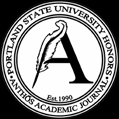Abstract
There are many ways to look at the word "body." It can signify a physical body or a body of work; it can be the framework of a text (the body of the piece) or it can represent an organized group of people (a regulatory body). Taken as a whole, each of these facets of the word seem to signify a singularity that is created by the collective sum of its parts—the body is made up of limbs, trunk and head; a body of work is a collection of an artist’s output; the body of a text is made up of words, phrases, and sentences; and a regulatory body consists of the people who, together, form it. While these ideas find definition by forming a collective, it is perhaps more interesting to break them apart and find new meaning in the juxtapositions of their individual components. The poetry of CA Conrad does just this in many ways: linguistically, by calling his work "soma(tic) poetry"; thematically, by writing The Book of Frank, a text that tells the tale of a life by breaking it up into individual vignettes that each stand on their own merit; and physically, by literally dissecting the physical body in his poems, often replacing parts of it with foreign objects to find new meaning in their usage.
DOI
10.15760/anthos.2014.101
Creative Commons License

This work is licensed under a Creative Commons Attribution-NonCommercial-Share Alike 4.0 International License.
Persistent Identifier
http://archives.pdx.edu/ds/psu/12597
Recommended Citation
Hennessey, Sean
(2014)
"Rebirth and the Body: CA Conrad and The Book of Frank,"
Anthós:
Vol. 6:
Iss.
1, Article 8.
https://doi.org/10.15760/anthos.2014.101
